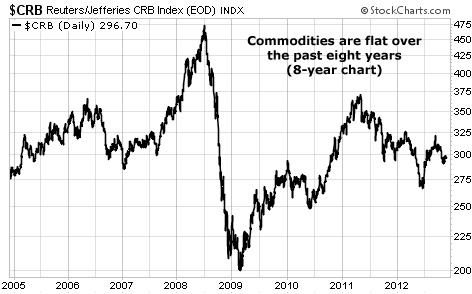| Home | About Us | Resources | Archive | Free Reports | Market Window |
You Might Not Know the Scope of the Investment Opportunity HereBy
Friday, November 30, 2012
Two days ago, I showed you why I'm bullish on natural gas.
With all the new supplies coming online in the U.S. – in the U.S., gas production has jumped 20% in the past five years – that's not a popular position.
But I know that over the next several years, an enormous shift is going to take place in the market for natural gas. In short, as the U.S. begins to export its massive supplies, natural gas will become a global fuel – with a consistent global price – just like oil.
If you understand that, you understand there are huge profit opportunities for early investors. But first, you need to understand the incredible scope of this idea. Let me show you...
Most of the demand for natural gas imports (in the form of liquefied natural gas, or "LNG") comes from Asia.
India, the world's second-most populous country, consumes about three times more gas than it produces. Just 7% of its energy consumption in 2010 was fueled by natural gas. As with China, it still uses coal for the overwhelming majority of its energy needs.
Indonesia only produces about 2.7% of world supplies, but has the world's fourth-largest population. Japan is the largest importer... with 116 billion cubic meters in 2011. Korea is the world's fifth-largest importer.
Europe is also chronically short on gas. Italy and Germany occupy the No. 2 and 3 importer spots, respectively.
The shortage is most intense in Japan. The March 2011 tsunami killed thousands of people and resulted in the closure of Japan's entire fleet of nuclear power plants. To make up for the power lost by these closures, Japan turned to LNG. According to International Energy Agency figures, Japan increased its LNG imports by 20% in 2011.
China, the world's most populous country, produced 3% of the world's 2011 supplies. It became a net importer in 2007, as its demand for natural gas increased to meet the needs of its developing infrastructure. And while natural gas represented just 4% of China's energy consumption in 2009, the government has pledged to increase the natural gas share to 10% by the year 2020.
China increased its imports by a massive 31% in 2011, and experts expect volumes to increase 3.5-fold by 2020. This will be a huge fundamental driver of LNG for the next 50 years – at least.
By the way... the sheer size of the U.S. economy, the amount of natural gas storage available, and the trading we support made us the fourth-largest net importer last year. That won't last long...
America is on its way to becoming a self-sustaining domestic energy supplier... as well as the world's largest energy producer and one of the largest energy exporters. Nobody expects this. But it will absolutely happen.
As I explained earlier this week, the prices for liquefied natural gas (LNG) are determined by long-term supply contracts. Little gas is available on the spot market (the market for immediately available gas). And currently, the prices on these long-term contracts are highly variable...
In the U.S., natural gas sells for around $3 per thousand cubic feet (mcf). In Europe, it goes for around $11 per mcf. And in Asia, it sells for approximately $17.
That's an enormous incentive to make cheap U.S. gas available to global markets. I already told you about Cheniere Energy's LNG export terminal in Louisiana. That should start operating in 2015. And Bloomberg reported that state-run Qatar Petroleum – together with ExxonMobil – received a permit to export gas from the Golden Pass terminal in Texas. Between them, they'll spend around $10 billion to build the new export facility.
We have some parts of the world with far too much gas... and some parts of the world with far too little gas. Given the economics, I believe the best and surest way to profit is likely to be from owning distribution assets... and the companies that will build them.
Good investing,
Porter Stansberry
Further Reading:
As natural gas discovery and production continues to rise, Porter has a list of companies he believes "will create enormous wealth for shareholders as the U.S. becomes a giant exporter of oil and gas." Learn more here: How to Own Your Share of the Next Wave of American Oil Wealth.
Market NotesYOU PROBABLY DIDN'T KNOW THIS ABOUT COMMODITIES Today's chart shows the big "sideways market" in commodities...
If you read newsletters or watch financial television for a week, you're likely to hear someone say commodity prices are soaring due to the debasement of the U.S. dollar. And while this is a serious future concern, today's chart shows that commodity prices aren't soaring at all.
One of the most widely used gauges of commodity prices is the "CRB Index." It tracks the price action in basic raw materials like copper, crude oil, natural gas, gold, sugar, cotton, and nickel.
As you can see from today's chart, the CRB Index sat around 300 in 2005. Since then, it has soared and crashed several times. But none of these movements have produced a meaningful uptrend. The CRB still sits around 300. Despite what some folks will tell you, there's been no commodity price inflation... just a big sideways market.
– Brian Hunt
 |
In The Daily Crux
Recent Articles
|


